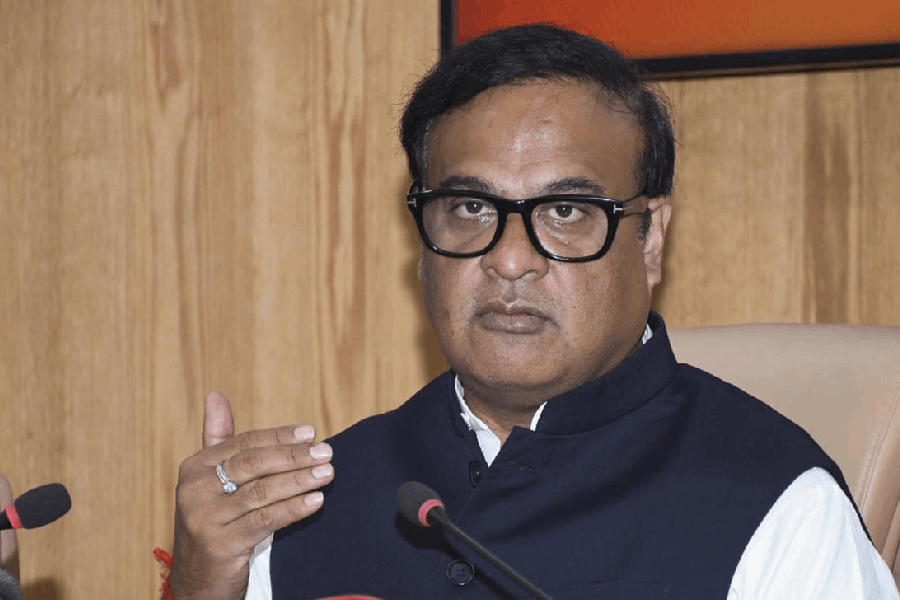The first part of Rahul Dravid's Bradman Oration was published in these columns on Thursday. The following are excerpts, which constitute the concluding part of the Oration:
One day out of nowhere, a boy from a village in Gujarat turned up as India's fastest bowler. After Munaf Patel made his debut for India, the road from the nearest railway station to his village had to be improved because journalists and TV crews from the cities kept landing up there. We are delighted that Umesh Yadav didn't become a policeman like he was planning and turned to cricket instead. He is the first cricketer from the Central Indian first-class team of Vidarbha to play Test cricket. Virender Sehwag, it shouldn't surprise, you belongs to the wild west just outside Delhi. He had be enrolled in a college which had a good cricket programme and travel 84kms every day by bus to get to practice and matches. Every player in this room wearing an India blazer has a story like this. Here, ladies and gentlemen, is the heart and soul of Indian cricket.
Playing for India completely changes our lives. The game has given us a chance to pay back our debt to all those who gave of their time, energy, resources for us to be better cricketers: we can build new homes for our parents, get out siblings married off in style, give our families very comfortable lives.
The Indian cricket team is in fact, India itself, in microcosm. A sport that was played first by princes, then their subordinates, then the urban elite, is now a sport played by all of India. Cricket, as my two under-19 teammates proved, is India's most widely-spoken language. Even Indian cinema has its regional favourites; a movie star in the south may not be popular in the north. But a cricketer? Loved everywhere.
It is, also, a very tough environment to grow up in - criticism can be severe, responses to victory and defeat extreme, there are invasions of privacy and stones have been thrown at our homes after some defeats. It takes time getting used to, extreme reactions can fill us with anger. But every cricketer realises at some stage of his career, that the Indian cricket fan is best understood by remembering the sentiment of the majority, not the actions of a minority.
One of the things that has always lifted me as a player was looking out of the team bus when we travelled somewhere in India. When people see the Indian bus going by, see some of us sitting with our curtains drawn back, it always amazes me how much they light up.
After India won the World Cup this year, our players were not congratulated as much as they were thanked by people they ran into. “You have given us everything,” they were told, “all of us have won.” Cricket in India now stands not just for sport, but possibilities, hope, opportunities.
… I believe this is also a time for introspection within our game, not only in india, but all over the world we have been given some alerts and responding to them quickly is the smart thing to do. I was surprised a few months ago to see the lack of crowds in an ODI series featuring India. By that I don't mean the lack of full houses, I think it was the sight of empty stands I found somewhat alarming. India played its first one-day international at home in November 1981 when I was nine. Between then and now India have played 227 ODIs at home; the October five-match series against England, was the first time that the grounds have not been full for an ODI featuring the Indian team.
In the summer of 1998, I played in a one-dayer against Kenya in Kolkata and the Eden Gardens was full. Our next game was held in the 48-degree heat of Gwalior and the stands were heaving. The October series against England was the first one at home after India's World Cup win. It was called the ‘revenge’ series meant to wipe away the memory of a forgettable tour of England. India kept winning every game, and yet the stands did not fill up. Five days after a 5-0 victory, 95,000 turned up to watch the India's first Formula One race.
A few weeks later, I played in a Test match against the West Indies in Calcutta, in front of what was the lowest turn out in Eden Gardens’ history. Yes we still wanted to win and our intensity did not dip. But at the end of the day, we are performers, entertainers and we love an audience. The audience amplifies everything you are doing, the bigger the crowd the bigger the occasion, its magnitude, its emotion. When I think about the Eden Gardens crowds this year, I wonder what the famous Calcutta Test of 2001 would have felt like with 50,000 people less watching us.
Australia and South Africa, played an exiting and thrilling Test series recently and two great Test matches produced some fantastic performances from players of both teams ,but was sadly played in front of sparse crowds. It is not the numbers Test players need, it is the atmosphere of a Test that every player wants to revel in and draw energy from; my first reaction to the lack of crowds for cricket was that there had been a lot of cricket and so perhaps, a certain amount of spectator-fatigue. That is too simplistic a view; it's the easy thing to say but might not be the only thing.
The India vs England ODI series had no context, because the two countries had played each other in four Tests and five ODIs just a few weeks before. When India and the West Indies played ODIs a month afer that, the grounds were full but this time matches were played in smaller venues that didn’t host too much international cricket. Maybe our clues are all there and we must remain vigilant.
Unlike Australia or England, Indian cricket has never had to compete with other sports for a share of revenues, mind space or crowd attendance at international matches. The lack of crowds may not directly impact on revenues or how important the sport is to Indians, but we do need to accept that there has definitely been a change in temperature over, I think, the last two years.
Whatever the reasons are – maybe it is too much cricket or too little by way of comfort for spectators. The fan has sent us a message and we must listen. This is not mere sentimentality. Empty stands do not make for good television. Bad television can lead to a fall in ratings, the fall in ratings will be felt by media planners and advertisers’ looking elsewhere.
If that happens, it is hard to see television rights around cricket being as sought after as they have always been in the last 15 years. And where does that leave everyone? I’m not trying to be an economist or doomsday prophet – this is just how I see it. Let us not be so satisfied with the present, with deals and finances in hand that we get blindsided. Everything that has given cricket its power and influence in the world of sports has started from that fan in the stadium. They deserve our respect and let us not take them for granted.
Disrespecting fans is disrespecting the game. The fans have stood by our game through everything. When we play, we need to think of them. As players, the balance between competitiveness and fairness can be tough but it must be found. If we stand up for the game’s basic decencies, it will be far easier to tackle its bigger dangers – whether it is finding short cuts to easy money or being lured by the scourge of spot-fixing and contemplating any involvement with the betting industry.
Cricket's financial success means it will face threats from outside the game and keep facing them. The last two decades have proved this over and over again. The internet and modern technology may just end up being a step ahead of every anti-corruption regulation in place in the game. As players, the one way we can stay ahead for the game, is if we are willing to be monitored and regulated closely. Even if it means giving up a little bit of freedom of movement and privacy. If it means undergoing dope tests, let us never say no. If it means undergoing lie-detector tests, let us understand the technology, what purpose it serves and accept it.
Now lie-dectectors are by no means perfect but they could acutally help the innocent clear their names. Similarly, we should not object to having our finances scrutinised if that is what is required. When the first anti-corruption measures were put into place, we did moan a little bit about being accredited and depositing our cell phones with the manager. But now, we must treat it like we do airport security because we know it is for our own good and our own security.
Players should be ready to give up a little personal space and personal comfort for this game which has given us so much. If you have nothing to hide, you have nothing to fear. Other sports have borrowed from cricket's anti-corruption measures to set up their own ethical governance programmes and we must take pride in belonging to a sport that is professional and progressive. One of the biggest challenges that the game must respond today, I believe, is charting out a clear roadmap for the three formats.
We now realise that the sport's three formats cannot be played in equal numbers – that will only throw scheduling and the true development of players completely off gear.
There is a place for all three formats, though, we are the only sport I can think of which has three versions. Cricket must treasure this originality. These three versions require different skills, skills that have evolved, grown, changed over the last four decades, one impacting on the other. Test cricket is the gold standard, it is the form the players want to play. The 50-over game is the one that had kept cricket's revenues alive for more than three decades now.
Twenty20 has come upon us and it is the format people, the fans want to see. Cricket must find a middle path, it must scale down this mad merry-go-round that teams and players find themselves in: heading off for two-Test tours and seven-match ODI series with a few Twenty20s thrown in. Test cricket deserves to be protected, it is what the world's best know they will to be judged by.
Where I come from, nation versus nation is what got people interested in cricket in the first place. When I hear the news that a country is playing without some of its best players, I always wonder, what do their fans think? People may not be able to turn up to watch Test cricket but everyone follows the scores. We may not fill 65,000 capacity stadiums for Test matches, but we must actively fight to get as many as we can in, to create a Test match environment that the players and the fans feed off. Anything but the sight of Tests played on empty grounds.
For that, we have got to play Test cricket that people can watch. I don't think day-night Tests or a Test championship should be dismissed. In March of last year I played a day-night first-class game in Abu Dhabi for the MCC – and my experience from that was that day-night Tests is an idea seriously worth exploring.
There may be some challenges in places where there is dew but the visibility and durability of the pink cricket ball was not an issue. Similarly, a Test championship with every team and player driving themselves to be winners of a sought after title seems like it would have a context to every game.
Keeping Tests alive, may mean different innovations in different countries – maybe taking it to smaller cities, playing it in grounds with smaller capacities like New Zealand has thought of doing, maybe reviving some old venues in the West Indies, like the old Recreation Ground in Antigua.
We are often told that Test matches don’t make financial sense. But one does not fall in love with Test cricket because one wants to be a businessman. Not everything of value comes at a price. There is a proposal doing the rounds, about scrapping the 50-over game completely . I am not sure I agree with that – I certainly know that the 50-over game helped us innovate strokes in our batting which we were then able to take into Test matches. We all know that the 50-over game has been responsible for improving fielding standards all over the world.
The future may well lie in playing one-day internationals centered around ICC events, like the Champions Trophy and the World Cups. This would ensure that all 50-over matches would build up for those tournaments. That will cut back the number of one-day internationals played every year but at least those matches will have a context. Since about, I think 1985, people have been saying that there is too much meaningless one-day cricket. Maybe it's finally time to do something about it.
The best role for Twenty20 is as a domestic competition through official leagues which will make it financially attractive for cricketers. That could also keep cricket viable in countries where it fights for space and attention. Because the game is bigger than us all, we must think way ahead of how it stands today. Where do we want it to be in the year 2020? Or say in 2027, when it will be 150 years since the first Test match was played. If you think about it, cricket has been with us longer than the modern motor car, it existed before modern air travel took off.
As much as cricket's revenues are important to its growth, its traditions and its vibrancy are a necessary part of its progress in the future. We shouldn't let either go because we played too much of one format and too little of the other.
Professionalism has given cricketers of my generation priviledged lives, and we know it, even though often you may often hear us whining about burn-out and travel and the lack of recovery time. Whenever we begin to get into that mindset, it's good to remember a piece of Sachin’s conversation with Bradman.
Sachin told us that he had asked Sir Don how he had mentally prepared for big games, what his routines were. Sir Don said, that well, before a game, he would go to work and after the game,go back to work. Whenever a cricketer feels a whinge, coming on, that would be good to remember. Before I conclude, I also want to talk briefly about an experience I have often had over the course of my career. It’s not to do with individuals or incidents, but one I believe is important to share.
I have sometimes found myself in the middle of a big game, standing at slip or even at the non-strikers end and suddenly realised that everything else has vanished. At that moment, all that exists is the contest and the very real sense of the joy that comes from playing the game. It is an almost meditative experience where you reconnect with the game just like you did years ago, when you first began. When you hit your first boundary, took the first catch, scored your first century, or were involved in a big victory.
It lasts for a very fleeting passage of time, but it is a very precious instant and every cricketer should hang on to it. I know it is utterly fanciful to expect professional cricketers to play the game like amateurs; but the trick I believe is taking the spirit of the amateur – of discovery, of learning, of pure joy, of playing by the rules – into our profession.
Taking it to practice or play, even when there's an epidemic of white-line fever breaking out all over the field. In every cricketer there lies a competitor who hates losing and yes, winning matters. But it is not the only thing that matters when you play cricket.
How it is played is as important for every member of every team because every game we play leaves a footprint in cricket's history. We must never forget that.
Concluded










